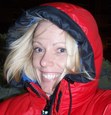Kristene Perron's Blog, page 6
December 27, 2013
The Truth Inside the Lie – Douglas Smith
On Writing About a Different Culture
My recent novel, The Wolf at the End of the World, takes place in modern-day northern Ontario and continues the story of the Heroka, my human-like shape-shifting race that I introduced in my award-winning story, "Spirit Dance."
Along with the Heroka mythology, The Wolf incorporates Cree and Ojibwa stories and traditions. Now, I’m a white male of British descent writing about First Nations culture and beliefs. Any author who writes about a current culture other than their own risks being accused of cultural appropriation.
That risk is even greater if the writer belongs to the majority that has traditionally held power in their society and is writing about an oppressed minority in that society. Europeans have persecuted and oppressed First Nations people since we first arrived in this land. My ancestors stole their land, broke treaty after treaty, and introduced policies designed to destroy their rich culture and way of life.
Perhaps the most egregious wrong was the residential school system that one of my characters suffered through, in which the Canadian government and various churches engaged in a premeditated formal program of cultural genocide. The publicly stated goal was to assimilate the “Indian” into Canadian society (meaning white European), but the program was designed (in a federal minister’s words in the 1920’s) “to kill the Indian in the child.”
Residential schools involved the forced removal of First Nations children as young as six years from their parents and homes, and their mandatory and permanent residence at boarding schools funded by our government and run by the Roman Catholic, Anglican, Methodist, United, and Presbyterian Churches. Survivors of the system have documented the abuses perpetrated in residential schools—thousands of cases of horrific physical, mental, and sexual abuse. Beginning in 1892, the system didn’t officially end until the last school run by the federal government closed in 1996.
Despite this sad history and continued government and cultural oppression, our indigenous people have persevered, carrying on their traditions and bringing their rich heritage to new generations, refusing to have their culture relegated to the past.
So, yes, I’m a tad paranoid that I, as a white man of British descent writing a story that draws from the storytelling traditions and culture of the Cree and Ojibwe, might be accused of cultural appropriation.
Let me first explain why I was drawn to these traditions and stories for this book. With the Heroka, I wanted to create something different from the standard were-beast. I wanted to downplay the shapeshifter element, and instead to have the primary characteristic of the Heroka to be the bond they hold with their totem species. I wanted the very vitality of a Heroka tied to the vitality of their totem.
Why? Because the theme of the book is a warning call about what we’re doing to our environment and to the wilderness that once defined this land—the wilderness the animal species that call this country home depend upon for survival.
So if this story was about resource exploitation and animal habitat destruction by modern society, I needed a contrasting cultural view, one founded on a deep and abiding respect for the relationship that has always existed between humans and nature, humans and animals—a relationship our modern society has forgotten and forsaken. I wanted a belief system diametrically opposed to the European view that places humans at the top of the pyramid of life on Earth.
And I found it in the stories of our First Nations. The Cree spirit Wisakejack is the voice for those stories in my book. If I could pick just one of his tales to demonstrate why these beliefs fit so perfectly with the Heroka and the book’s theme, it would be his story of the creation of the world.
First, Kitche Manitou created the four elements—earth, water, fire, and air—and from them made the world—the Sun, stars, Moon, and Earth. Then he created the orders of life. First plants, which needed the sun, air, water, and earth. Then the plant eaters, which need the plants. Then the meat eaters, which need the plant eaters. And finally, he created humans. We came last, because we need everything that Kitche Manitou created before us. Air, water, earth, sun, plants, animals. We are the most dependent of all of creation, making us the weakest of all orders of life, not the strongest.
My Heroka understand that relationship. They get it. They understand that everything’s connected. Western society has forgotten our dependency on the land. Forgetting our connection, we’ve lost it, too.
These stories don’t encompass all of aboriginal culture. First Nations people are diverse and express their beliefs in varied ways, plus many today are also urban dwellers. But most First Nations stories speak of the close connection between humans and animals and the land, and I believe those stories continue to have relevance.
So that’s why I chose to draw on the rich and wonderful stories and traditions of the Cree and Ojibwe in this book. But that’s only part of my response to any concern a First Nations’ reader might have about cultural appropriation.
I researched. A lot. I read as much as I could about the ceremonies, beliefs, traditions, and histories of the Cree and Ojibwe. And I read the stories. Ever so many stories. Because these stories were more than mere entertainment. The People used stories to teach their children about the harsh environment they lived in, where starvation was only one bad hunt away.
I stayed at an Ojibwe First Nations Reserve. I interviewed the chief and her mother. I visited three different reserve communities and talked to as many First Nations people as I could. I read more. In short, I tried to do my homework as best as I could.
Finally, I’ve treated the Cree and Ojibwe culture with reverence and respect wherever I’ve used it in the book. That wasn’t hard to do. The more I learned of the culture, the more I held it in reverence and respect.
So there’s my defence. I fell in love with the stories and the culture, and found in them the same core truth that is the theme of the book. I did my best to get things right. And I treated that culture with respect.
If you’re Cree or Anishinabe or of any other First Nation, and you read The Wolf at the End of the World, I’d love to hear from you. Tell me what I got right. Tell me what I got wrong. Tell me what you thought.
Additional Reading
If you would like to learn more about the shameful chapter of residential schools in Canada’s history, I’d recommend Basil H. Johnston’s book, Indian School Days, which relates his personal experiences in a residential school. Johnston is an Ojibwe writer, storyteller, language teacher, and scholar, and has received the Order of Ontario and Honorary Doctorates from the University of Toronto. His other books were also a wonderful research source for this novel (see bibliography). I’d also point you to the film “Unrepentant: Kevin Annett and Canada’s Genocide,” which is available on YouTube. I would also recommend the “Truth and Reconciliation” website at http://www.trc.ca.
I also include a bibliography in my novel detailing the reference sources that I used in my research. If you’re interested, I heartily recommend that you check them out and read the stories yourself, both to enjoy and to learn more about the culture.
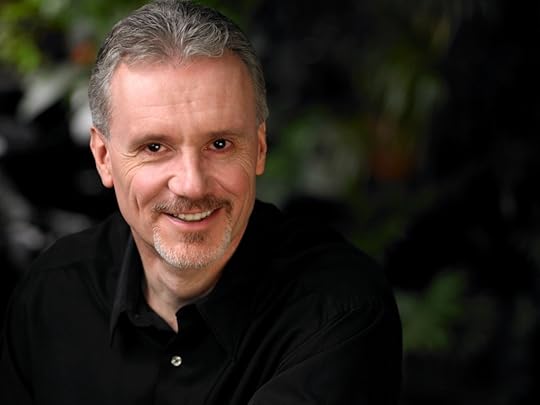 Douglas Smith is an award-winning Canadian author who has been published in thirty countries and twenty-five languages. His first novel, The Wolf at the End of the World, an urban fantasy with shapeshifters and Cree and Ojibwa mythology, was released in 2013. His collections include Chimerascope (2010), Impossibilia (2008), and La Danse des Esprits (France, 2011). Doug is a three-time winner of Canada’s Aurora Award, and has been a finalist for the John W. Campbell Award, CBC’s Bookies Award, Canada’s juried Sunburst Award, and France’s juried Prix Masterton and Prix Bob Morane. His website is www.smithwriter.com, and he tweets at twitter.com/smithwritr.
Douglas Smith is an award-winning Canadian author who has been published in thirty countries and twenty-five languages. His first novel, The Wolf at the End of the World, an urban fantasy with shapeshifters and Cree and Ojibwa mythology, was released in 2013. His collections include Chimerascope (2010), Impossibilia (2008), and La Danse des Esprits (France, 2011). Doug is a three-time winner of Canada’s Aurora Award, and has been a finalist for the John W. Campbell Award, CBC’s Bookies Award, Canada’s juried Sunburst Award, and France’s juried Prix Masterton and Prix Bob Morane. His website is www.smithwriter.com, and he tweets at twitter.com/smithwritr.
Thanks for visiting the Warpworld Comm! Contact us for infrequent, non-spammy, and highly entertaining Warpworld news.
December 23, 2013
The Truth Inside the Lie – Nathan Elberg
The World is a Wild Place
People are different. Not just in appearance, or restaurant preference. Not just in intelligence, but how they apprehend the world. You might say there’s a pencil on a table. A Pacific Islander would say that the table lumps. You might say there are a few pencils on the table. The Islander would say the table lumps severally.
You might say that your father’s brother’s children are your cousins, while your male siblings are your brothers. In many societies though, your father’s brother’s children might be just as much your brothers as your male siblings.
You might believe in fundamentals, like honesty, loyalty, perseverance. Those are not universal cultural values. You might consider the biologist’s classification of species to be a scientific truth. Some peoples don’t care about species; they care more about tribe. They feel no loyalty or obligation to non-tribal humans. They may not even have a concept of a species. Reality for some cultures is something that can only be experienced with hallucinogens way stronger than LSD.
The world is an amazing, diverse place. It’s a frightening place if you look at it closely. Most people, and especially the media like to camouflage diversity, pretending that the differences between peoples are superficial. As my beloved teacher wrote:
Though people differ in color and creed, they all love, quarrel, protect their children, etc., exactly as we do. The message is clear: we should love them because they are like us. But that statement has its questioning brother: what if they aren’t like us?
Edmund Carpenter, Oh, What a Blow that Phantom Gave me.
They’re not like us. That makes the world into a gold mine for writers. Look at other societies, other cultures. Up until the early nineteen sixties, anthropology focused on describing the diverse ways of life of people of the world. The anthropologists felt guilty though, that they might be tools of colonialism, and the field shifted towards political apologia. So get hold of some of the early works of anthropology: descriptions of Eskimos, Indians, Indonesians, Africans… Stone Age people, cannibals, farmers, peasants. For example, there’s a wonderful book published in 1959 about the Pathans, people who later became known as the Taliban. There’s great potential for stories in their combative culture.
My novel Quantum Cannibals,my short stories all make use of human cultural diversity. I bring together an Aztec war deity, a Siberian transvestite, and an Eskimo shaman; I toss in an archaeologist to help explain. I dump them in Mesopotamia, in the arctic, in a city. Headhunting cannibals recite Biblical psalms. A quantum scientist uses magic from Kurdish folklore. Bronze-Age demonology deals with transportation problems in a modern city.
The world is a wild place. Use it in your writing.
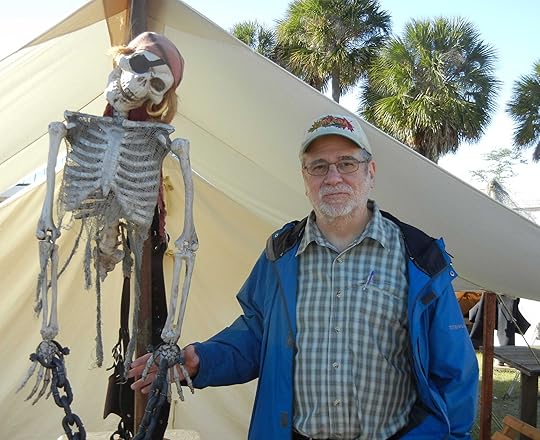 Nathan Elberg has hunted and trapped with Indians and Eskimos, studied folklore, warfare, cannibalism, shamanism, Kabbalah, primitive art, and communications among other things. All these form part of the Quantum Cannibals world. He is doing a doctorate on the subject of popular beliefs in science and Judaism, is a member of SF Canada, and the Canadian Fantasy and Science Fiction Association. He has just launched Quantum Cannibals, a website and novel about science, progress, and culture.
Nathan Elberg has hunted and trapped with Indians and Eskimos, studied folklore, warfare, cannibalism, shamanism, Kabbalah, primitive art, and communications among other things. All these form part of the Quantum Cannibals world. He is doing a doctorate on the subject of popular beliefs in science and Judaism, is a member of SF Canada, and the Canadian Fantasy and Science Fiction Association. He has just launched Quantum Cannibals, a website and novel about science, progress, and culture.
Nathan’s recent short stories include:
Dancing With Whiskey Jack; Bewildering Stories (estimated publication late 2013)
Sticks, Stones, and Monsters; Bewildering Stories
The Ways of the Goat; Portals print anthology, ed. Dorothy Davies; estimated publication late 2013.
A Matter of Trust; The Lorelei Signal
The Fire Snake Constellation; Roar and Thunder
Iron Will, Broken Fingers; Shadows of the Mind anthology, ed. L. J. Gastineau
Sitting in a Tipi, Waiting for a Truck; Scholars & Rogues Literary Journal
Thanks for visiting the Warpworld Comm! Contact us for infrequent, non-spammy, and highly entertaining Warpworld news.
December 17, 2013
The Truth Inside the Lie – Eileen Kernaghan
The Alchemy of Historical Fiction
When I begin a historical fantasy set in a real time and place, I have an unspoken contract with my reader. I’m free to create new adventures for real historical figures – events and situations that are not recorded in the history books. But I can’t – or at least I shouldn’t – relocate them in times and places where history tells us they couldn’t possibly have been. When I write in the cracks and empty spaces of documented history, I try not to change the things that we know to be true.
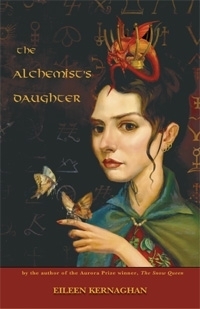 My research for The Alchemist’s Daughter, set in Elizabethan England, led me to stories of unsuccessful alchemists who, having promised gold they couldn’t deliver, were likely to be tortured or executed. That gave me my basic plot – how the daughter of a very unsuccessful alchemist set out to save her father from a foolish promise to the Queen.
My research for The Alchemist’s Daughter, set in Elizabethan England, led me to stories of unsuccessful alchemists who, having promised gold they couldn’t deliver, were likely to be tortured or executed. That gave me my basic plot – how the daughter of a very unsuccessful alchemist set out to save her father from a foolish promise to the Queen.
It also led me to read about Dr. John Dee, the Elizabethan alchemist who was rumoured to have discovered the philosophers’ stone and buried it at Glastonbury. That fit nicely into the plot – and set my heroine, Sidonie Quince, on the road to Glastonbury.
There Sidonie chanced across another historical figure rumoured to have dabbled in magic and alchemy – Lady Mary Sidney, known as the second most intelligent woman in England. At her family estate, Wilton House, Lady Mary conducted a famous literary salon, attended by most of the well known writers and musicians of the age. Meanwhile she grieved the death in battle of her much beloved brother Philip Sidney. At this point the ghost of Sir Philip Sidney made his way into my plot, along with some famous visitors to Wilton House – including Will Shakespeare, who got a walk-on part.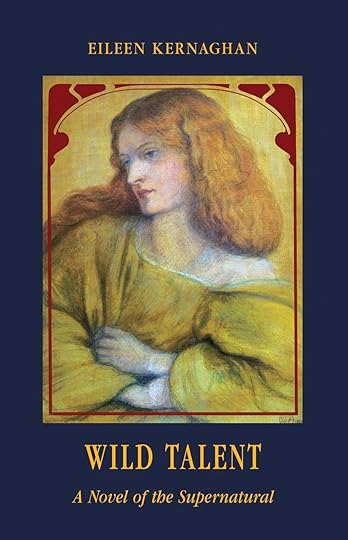
A little deeper research, and I came across the seldom mentioned figure of Adrian Gilbert, brother of the much more famous Sir Humphrey Gilbert. Adrian was living at Wilton House as a gardener, but in earlier times, I discovered, he had been involved along with Dr. John Dee in an ill-fated search for the fabled northwest passage to Cathay. So here was a curious sidelight of history that I couldn’t resist including. Eventually all these twisting paths I’d been following seemed to circle around and meet.
The late Victorian London and fin de siècle Paris of Wild Talent: a Novel of the Supernatural provided me with a cast of real life spiritualists, occultists, artists, poets, anarchists and members of esoteric cults that I’d have been hard put to invent. Alexandra David, who later became famous as the Himalayan explorer Alexandra David-Neel, turned up in an early chapter and tried to take over the plot. Madame Blavatsky, doyenne of the London theosophist movement, blustered her way through the pages; the young Arthur Conan Doyle and William Butler Yeats dropped in. But they all had to abide by my rules: they were required to stay in character (or at least the character that history has ascribed to them) and they couldn’t turn up in an impossible time or place.
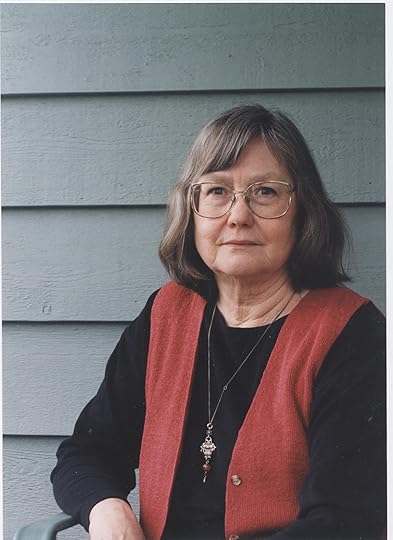
Eileen Kernaghan is the author of eight historical fantasy novels that reflect her fascination with other times and places, from the prehistoric Indus Valley to Victorian England. She was shortlisted in 2009 for the Sunburst Award for Canadian Literature of the Fantastic, and in 2005 for the Sheila Egoff Prize for Children’s Literature. Her latest novel, Sophie, in Shadow, is set in India under the Raj, circa 1914. It will be published by Thistledown Press in spring 2014.
www.eileenkernaghan.ca
More great guest posts on the way and don’t forget our special holiday giveaway is on until December 23rd!
Thanks for visiting the Warpworld Comm! Contact us for infrequent, non-spammy, and highly entertaining Warpworld news.
December 16, 2013
Bonus Holiday Giveaway!
It’s Goodreads giveaway time again but this time we’ve been overwhelmed by the Bliss and we’re giving away both books. You can enter to win a double signed copy of Warpworld and Wasteland Renegades. Give them as gifts or keep them as your raid trophies but enter before December 23rd for your chance at a successful multistrike!
.goodreadsGiveawayWidget { color: #555; font-family: georgia, serif; font-weight: normal; text-align: left; font-size: 14px;
font-style: normal; background: white; }
.goodreadsGiveawayWidget img { padding: 0 !important; margin: 0 !important; }
.goodreadsGiveawayWidget a { padding: 0 !important; margin: 0; color: #660; text-decoration: none; }
.goodreadsGiveawayWidget a:visted { color: #660; text-decoration: none; }
.goodreadsGiveawayWidget a:hover { color: #660; text-decoration: underline !important; }
.goodreadsGiveawayWidget p { margin: 0 0 .5em !important; padding: 0; }
.goodreadsGiveawayWidgetEnterLink { display: block; width: 150px; margin: 10px auto 0 !important; padding: 0px 5px !important;
text-align: center; line-height: 1.8em; color: #222; font-size: 14px; font-weight: bold;
border: 1px solid #6A6454; border-radius: 5px; font-family:arial,verdana,helvetica,sans-serif;
background-image:url(https://www.goodreads.com/images/layo... background-repeat: repeat-x; background-color:#BBB596;
outline: 0; white-space: nowrap;
}
.goodreadsGiveawayWidgetEnterLink:hover { background-image:url(https://www.goodreads.com/images/layo...
color: black; text-decoration: none; cursor: pointer;
}
Goodreads Book Giveaway
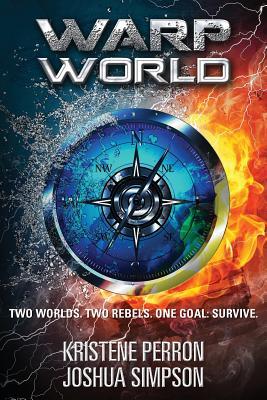
Warpworld
by Kristene Perron
Giveaway ends December 23, 2013.
See the giveaway details at Goodreads.
.goodreadsGiveawayWidget { color: #555; font-family: georgia, serif; font-weight: normal; text-align: left; font-size: 14px;
font-style: normal; background: white; }
.goodreadsGiveawayWidget img { padding: 0 !important; margin: 0 !important; }
.goodreadsGiveawayWidget a { padding: 0 !important; margin: 0; color: #660; text-decoration: none; }
.goodreadsGiveawayWidget a:visted { color: #660; text-decoration: none; }
.goodreadsGiveawayWidget a:hover { color: #660; text-decoration: underline !important; }
.goodreadsGiveawayWidget p { margin: 0 0 .5em !important; padding: 0; }
.goodreadsGiveawayWidgetEnterLink { display: block; width: 150px; margin: 10px auto 0 !important; padding: 0px 5px !important;
text-align: center; line-height: 1.8em; color: #222; font-size: 14px; font-weight: bold;
border: 1px solid #6A6454; border-radius: 5px; font-family:arial,verdana,helvetica,sans-serif;
background-image:url(https://www.goodreads.com/images/layo... background-repeat: repeat-x; background-color:#BBB596;
outline: 0; white-space: nowrap;
}
.goodreadsGiveawayWidgetEnterLink:hover { background-image:url(https://www.goodreads.com/images/layo...
color: black; text-decoration: none; cursor: pointer;
}
Goodreads Book Giveaway

Wasteland Renegades
by Kristene Perron
Giveaway ends December 23, 2013.
See the giveaway details at Goodreads.
Thanks for visiting the Warpworld Comm! Contact us for infrequent, non-spammy, and highly entertaining Warpworld news.
December 11, 2013
The Truth Inside the Lie – Andy Rogers
Let the Voyeurs In
The most transformative lessons in my life are the ones that make me consider the sort of person I want to be. I’m talking about, ‘Who am I?’ in those I’m-all-alone-and-there-ain’t-nobody-that-can-ever-find-me-muhaha kind of situations.
How do I truly want myself to behave?
We all garb ourselves in various personas when we are subject to the perceptions of others. I hope for myself that I make reasonable choices with regards to how I behave in public. But at my core, what kind of person do I wish to be when I’m completely safe from scrutiny?
I think that’s a fair and introspective question for people to ask themselves. I also think that question is a freakin’ gold mine for writers.
As writers, we can take these highly intimate, naked moments and turn them into something voyeuristic. It doesn’t matter if our characters are self-honest or self-delusional in these private moments, we can lay their most intimate choices bare for our readers.
I’ll give an example of this from my own life. It’s a real-life experience that I leveraged in my book CRAVINGS. It’s the story of myself as a kid and growing into a young man. I’m trying to avoid a cheesy Spiderman homage here, but it is a story where I discover the power inherent in an adult, male body and the responsibility that comes along with that power.
I’m a big guy. I grew up using handsaws to fell trees for firewood, digging postholes for fences, and carrying five-gallon buckets of steaming water to thaw the horses’ frozen water barrels. I got my first fulltime labor job when I was twelve. By the time I was seventeen, I had a powerful physical frame just like a lot of rural farm kids. When I was seventeen, I didn’t give much thought to anyone or anything else around me just like teenaged boys on every planet in the universe.
In addition to horses, goats, rabbits, ducks and one ill-fated stint with turkeys (seriously… both of my parents still bear the scars), my family always had a dog or three. One of our dogs was a Springer Spaniel that my sister named Gretchen.
Gretchen was a bit twitchy at the best of times and she unfortunately suffered from something called Springer Rage. It’s a real thing and a sad thing. You can look it up. Essentially, though, Gretchen was subject to random bouts of violent behavior. The whole family knew this. We dealt with it and got on with our lives.
My family was hanging out in our living room one evening. My parents each sat in their chairs, reading. My sister and brother were piled on one side of our couch and there, sprawled across the other side, was Gretchen.
With no space left to sit, I flopped down on the floor in front of the couch. Gretchen’s loose wires crossed and she lunged at me, jaws snapping. I caught her – like I said, we were all used to her fits – but she bit me once in the face.
I wasn’t hurt, thankfully. That would have been the death of the dog. But it scared me. And my reaction to that fear was violent.
One wall of that room is a floor-to-ceiling bookshelf. It was six, maybe seven feet away from where I held Gretchen by the neck. I threw her that distance. She struck the shelves near my six-foot height. When she landed, she dragged herself mewling over to me.
God save us from the brainless acts of young men.
All this set up is for the delivery of one line of dialogue. It came from my father. He took my arm and pulled me several steps down the hallway. I remember that I was still shaking when he told me this. “Son, you’re a man now. You can kill that dog, but you can’t hurt her.”
The meaning of those words has changed for me over the years, too much so to include in an already overly long blog post. But I think the evolution of meaning only goes to underscore the personal significance those words have held for me. They remind me of action, reaction and consequence in a deeply private and personal way.
I harnessed that significance when writing CRAVINGS. It’s not the plot of the book or even a theme for that matter. However, I was able to leverage that introspection-inducing experience to frame the consequences of my protagonist’s choices. Also, it underpins and humanizes the motivations behind one of the story’s antagonists.
That little anecdote does a lot of heavy lifting in the book. It takes a type or kind of experience that is generally very private and exposes it. Shines a light on it. And, hopefully, it allows readers to experience that intimate process as their own.
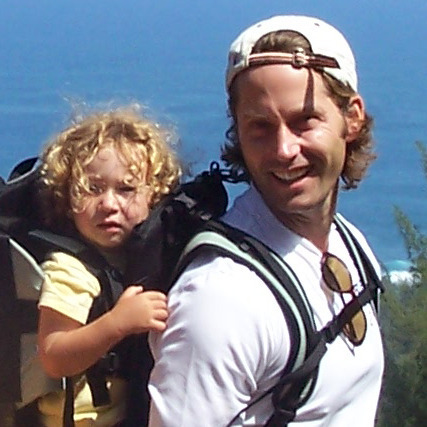 Andy Rogers is an Alaskan father, husband, outdoorsman, writer, cartoonist, and gamer. We’re talking dice and cards here, folks. You can keep your gadgets.
Andy Rogers is an Alaskan father, husband, outdoorsman, writer, cartoonist, and gamer. We’re talking dice and cards here, folks. You can keep your gadgets.
Find Andy online at arogers907.wordpress.com or follow his webcomic, Droblar, at droblar.com
Thanks for visiting the Warpworld Comm! Contact us for infrequent, non-spammy, and highly entertaining Warpworld news.
December 9, 2013
The Truth Inside the Lie – Matthew Hughes
What Would Winston Churchill Say?
I spent most of my adult life as a freelance speechwriter, writing mainly for CEOs (they don’t mind spending extravagant amounts on themselves) and the occasional politician. I didn’t know I was a born speechwriter until I wrote my first speech, while working as assistant to a Member of Parliament. I discovered I had the rare knack of being able to hear a speaker’s voice and speech patterns in my head, then write the text so that the words sounded natural.
Mostly, I wrote bread-and-butter jobs, an endless succession of Chamber of Commerce luncheons and Rotary dinners. Sometimes, I’d get to stretch myself: twice, I was instrumental in getting an underdog candidate chosen for the leadership of the BC Liberal Party, back before it was taken over by Social Crediters, swimming away from the Bill Vander Zalm shipwreck. (If, dear reader, you know nothing of that meshuggenah fiasco, count yourself lucky).
But in idle moments – in which the life of a freelancer abounds – I used to imagine writing for one of the great voices: a Kennedy, a Diefenbaker, a Churchill. I would never have wanted to write for Richard Nixon, by the way, but when I had to compose deeply conservative editorials for a weekly newspaper I edited in 1973, I did use to write them in Tricky Dick’s voice, and they delighted the paper’s right-wing owner.
After I became a fiction writer and started selling to the digest mags, one day I was casting about for a story idea, and up popped the notion of a time travel piece about some idealist who went back to 1940 to tell Winston Churchill how to shorten the war. The concept wasn’t all that earthshaking, but the prospect of writing it in the first person, from Churchill’s point of view, with his voice in my head – I so wanted to do that.
So I did. And sold it to Gardner Dozois, who was then editing Asimov’s. The title was “The Devil You Don’t,” which gives a pretty good clue as to how Churchill reacted to the offer. The story came out, got some nice review mentions, sank without trace.
I was happy enough with it. I thought I’d captured that unique voice. But of course I’ll never know, will I?
Every now and then, I daydream about running into one of the actors who’ve played Churchill – Robert Hardy did the best job, for my money – and talking him into reading the text aloud with all the right intonations and off-centre cadences.
And I’d sit there, and listen, and say to myself: oh, yeah, that’s it.
If you’re interested, here’s the beginning:
The frantic sparks fly up into the November night like lost souls seeking safe harbor who, finding none, extinguish themselves against the unheeding darkness. Or so I might write it if ever I should put pen to paper to tell this tale. But I shall not.
The fire itself is confined by the blackened steel barrel. I poke again with the gardener’s fork and another flurry of sparks shoots up, and with them scraps of burning paper. By the flickering light of the flames I can sometimes see a printed word or two before they are consumed: Alamein, Rommel, Singapore, Yalta.
The books are thick. They will take time to burn but I have learned patience. I have always taken the longer view. Perhaps it is a sense of history. Perhaps it is just how I am formed. But, in the arena of public life, he who takes the longer view must win out in the end.

Matthew Hughes writes science-fantasy. His alter ego, Matt Hughes, writes crime fiction. A personality fragment, Hugh Matthews, writes media tie-ins.
His novels include, To Hell and Back: The Damned Busters (Angry Robot Books, 2011) The Other (Underland Press, 2011), Song of the Serpent, (Paizo Publishing, 2011), To Hell and Back: Costume Not Included (Angry Robot Books, 2012), To Hell and Back: Hell to Pay (Angry Robot Books, 2013), Old Growth (Five Rivers, 2014).
His short fiction has appeared in Alfred Hitchcock’s, Asimov’s, Blue Murder, Fantasy & Science Fiction, Postscripts, Storyteller, Interzone and a number of “Year’s Best” anthologies.
Formerly a journalist, he became staff speechwriter to the Canadian Ministers of Justice and Environment in the Pierre Trudeau government of 1974-79, then spent more than twenty-five years as a freelance speechwriter for Canadian corporate executives and political leaders. At present, he is seeing the world while augmenting a fiction writer’s uncertain income by housesitting.
He has won the Arthur Ellis Award from the Crime Writers of Canada, and has been short-listed for the Aurora, Nebula, Philip K Dick, Endeavour, and Derringer Awards.
His web page is at http://www.matthewhughes.org
Thanks for visiting the Warpworld Comm! Contact us for infrequent, non-spammy, and highly entertaining Warpworld news.
December 5, 2013
The Truth Inside the Lie – Noah Chinn
Next week on Second Nature…
If those words ring a bell, you remember one of the best weekly TV interview shows a kid could have growing up.
In 1989, TVOntario launched what was one of the most unusual interview show in Canadian television. It interviewed authors. Science fiction and fantasy authors.
 Keep in mind this was at a time where fandom wasn’t quite where it is today. Today conventions have hit a kind of mainstream critical mass that didn’t quite exist in the same way 20 years ago. This show was a glorious celebration of geek culture before geek culture became cool.
Keep in mind this was at a time where fandom wasn’t quite where it is today. Today conventions have hit a kind of mainstream critical mass that didn’t quite exist in the same way 20 years ago. This show was a glorious celebration of geek culture before geek culture became cool.
And it wasn’t just the format of the show that was unusual. Prisoners of Gravity had a fictional hook, the host.
Commander Rick, sick of the problems on Earth, straps a rocket on his car and launches it into space, ending up stranded on a kind of massive satellite/space station where he sets up a pirate broadcast, interfering every week with a nature show called Second Nature.
Prisoners of Gravity lasted almost 140 episodes over 5 seasons, between 1989 and 1994, and interviewed the likes of Neil Gaiman, Terry Pratchett, Alan Moore, Spider Robinson, Harlan Ellison, Frank Miller, and so many more. The episodes were all themed, so one episode might be looking how fiction handles war, while another might be about sexuality, or virtual reality, or villains, or JRR Tolkien.
The loopy space station premise was actually the fun glue that held the show together. Commander Rick was the uber-nerd. He was one of us, but with access to a space station and his computer assistant NANCY, he brought you information you couldn’t get anywhere else.
We think about going to conventions to meet our literary heroes, but the beauty of Prisoners of Gravity was that it was like going to a convention every week, and hearing various writers thoughts on a whole new topic. I think, more than anything else, that show motivated me to become a writer. Heck, they had an episode that was all about how to BE a writer.
Sadly, the episodes will never be released on DVD due to various rights issues (they secured broadcast rights when making the series, but at that time the thought of selling them on tape or disk never occurred to anyone).
Fortunately, a number of episodes are still available on YouTube–enough to let you enjoy a truly great TV series, to catch a glimpse of some of your favorite writers as they were 20 years ago, and to see what, in an age of Honey Boo Boo and The Amazing Race, we are currently missing out on.
I’m re-posting those episodes each Sunday on my website, encouraging people to discover or get reacquainted with a show that was made with geek readers in mind, and talk about how things have changed or stayed the same since then.
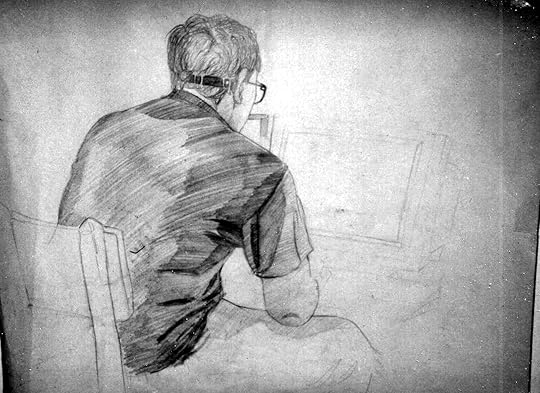
Noah Chinn was born in Oshawa, Ontario, and has never really forgiven it for that. Shortly after university he moved to Vancouver, where he met his future wife, Gillian. He then spent the summer bicycling across Canada, which she thankfully didn’t misinterpret as him trying to get as far away from her as possible. They moved to Japan for three years, where he taught English yet managed not to learn a word of Japanese.
He later moved to England with dreams of making it big as a writer – because with a BA in English Lit it was either that or serving fries at a burger shack. Unfortunately, in the way aspiring actors move to Hollywood and end up as busboys, the closest he came to literary success in England was working at several bookstores – each of which mysteriously closed down after his stay.
After moving back to Canada, he found more success in the North American market. He and his wife now live in Vancouver.
He now wears a hat.
You can find Noah at: noahjdchinnbooks.com
Thanks for visiting the Warpworld Comm! Contact us for infrequent, non-spammy, and highly entertaining Warpworld news.
November 30, 2013
The Truth Inside the Lie – Nina Munteanu
The Battle of Grunwald and the Fate of the Teutonic Knights
My part in this piece of history really started sometime in 2008 with the vision of an incredible image by Croatian artist Tomislav Tikulin. It was the image of a magnificent knight, standing in a war-littered mire and gazing up, questioning, at the vaulted ceiling of a drowned cathedral. A great light shone upon the knight in streams of white gold. It sent my imagination soaring with thoughts of chivalry, adventure and intrigue. Who was this knight?
With that image imprinted inside me, the next nexus moment came when I stumbled across a significant but little-known battle in the medieval Baltic, the Battle of Grunwald. It would turn out to be the defining battle for what are now the countries of Poland and Lithuania. On June 14th 1410, they were still part of Prussia and tyrannized by the Teutonic Order, who were Christianizing the pagan Baltic on behalf of the Pope. In truth, the Order had been for centuries gathering wealth and land for colonizing Germans in their drang nach osten; they built sturdy castles (many of which still stand today) and a force of monk warriors, feared for their cunning strategy and treacherous combat abilities.
The Battle of Grunwald was, in fact, an upset in history. The Teutonic Order was powerful, intimidating and extremely capable. They should have won; but the peasant armies of Prussia slaughtered the Order, killing most of its knights. Historians debate that the hochmeister’s arrogance—indeed, the arrogance of the entire Order—precipitated their downfall. They underestimated their adversaries and got sloppy. After the Polish and Lithuanian armies outsmarted the Order and slayed their hochmeister, along with many of their knights, the Order’s own peasant slaves finished the job using clubs, pitchforks and stones.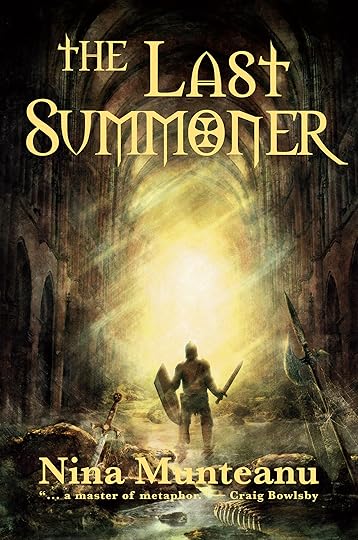
Intrigued by this little known order of religious crusaders, I pursued the premise of an alternative consequence: what if the Teutonic Knights had NOT underestimated their enemy and won the Battle of Grunwald? Would they have continued their catastrophic sweep of North-east Europe into Russia and beyond? Would they have claimed the whole for Germany’s expansionist lebensraum movement, fueled by its sonderweg, a dialectic that would ultimately lead to the killing fields of the Holocaust? What if the success of the Teutonic Order helped consolidate a united fascist elite, ambitious to conquer the world? And what if, as a result, Nazism sprang up 100 years earlier?
The Last Summoner, arose from this premise. Enter our heroine, young 14-year old Vivianne Schoen, Baroness von Grunwald, a self-centered romantic who dreams that her ritter will rescue her from an arranged marriage to some foreign warrior. As a result of an impetuous choice, she makes the startling discovery that she can alter history—but not before she’s branded a witch and must flee through a time-space tear into an alternate present-day France ruled by fascists. There, she learns that every choice has its price.
Spanning from medieval Poland to present day Paris, France, The Last Summoner explores the sweeping consequences of our “subtle” choices. From the smallest grab to the most sweeping gesture, we are accountable for the world we’ve made. During her 600-year journey to save the world and undo the history she authored, Vivianne learns wisdom and humility. Through the paradox of history, she learns that what might have seemed the right choice for an immediate future, turns out to be disastrous for a distant future. To win is also to lose; to save oneself one must surrender oneself; and to save the world one need only save a single soul. The knight standing in the mire is Vivianne.
The Last Summoner, published by Starfire World Syndicate, was released in 2012 and remained a Canadian bestseller on Amazon for several months. It represents my first historical fantasy in an otherwise repertoire of hard science fiction. The Polish and Lithuanians celebrate June 14th with pride, erecting mock-ups of the battle annually. Some day I hope to participate.
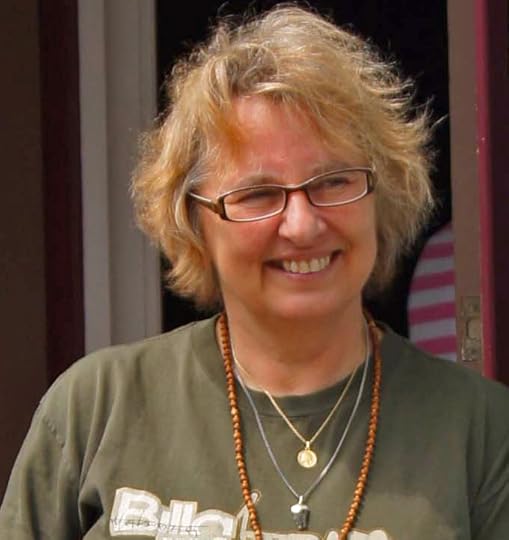
Nina Munteanu is an ecologist and internationally published novelist and short story author of science fiction and fantasy. She is currently editor of SF Europa, a zine dedicated to informing the European SF community. Nina teaches writing courses at the University of Toronto and George Brown College.
Her guide for writers called "The Fiction Writer: Get Published, Write Now!" by Starfire World Syndicate was adopted by several colleges and universities throughout North America and Europe. It was recently published by Editura Paralela 45 in Romania. The next book in her writing guide series "The Journal Writer: Finding Your Voice" was released in spring of 2013.
For more information about booking her workshops, consultations, or speaking appearances visit www.NinaMunteanu.com.
Thanks Nina! Next up Noah JD Chinn Prisoners of Gravity
Thanks for visiting the Warpworld Comm! Contact us for infrequent, non-spammy, and highly entertaining Warpworld news.
November 27, 2013
The Truth Inside the Lie – Ira Nayman
Rituals
In social situations, writers and psychiatrists have a similar problem of perception. People become wary when talking to psychiatrists for fear that the shrink will analyze everything they say. In a similar vein, people are wary of talking to writers for fear that they will become (unsympathetic) characters in a story. Knowing this, whenever I used to meet people for the first time, I would tell them not to worry, that I wouldn’t use anything they told me in my writing.
This is the story of how my attitude on this issue changed.
I was talking on the phone to a friend of mine who had a couple of weeks earlier returned from a vacation to Mexico with her fiancé. After a couple of minutes of small talk, she got to the heart(break) of the matter: while they were sitting on the beach, her fiancé turned to her and said: “I don’t know if I’ve ever loved you. But, I know that I don’t love you now.” Wedding off. Brutally.
I had been reading about women who created their own feminist rituals for dealing with life-changing moments, and I suggested that she create one of her own. Talking back and forth, she agreed to get a metal garbage can and make a bonfire of whatever objects of his she still owned. I remembered part of the Passover ritual was to go through the house the night before, collecting unkosher foods with a feather and a candle and reciting a prayer which said, in essence, “Hey, god, I tried my best to find all the unkosher food. If I missed something, cut me some slack, okay?” I suggested to my friend that she incorporate all of this into the ritual she was creating. She agreed. She didn’t need to understand the Hebrew words (my friend being a good Catholic woman); the prayer just had to convey to her the feeling that she needed to move on.
Unfortunately, I didn’t know the prayer off by heart. So, my friend rang off and contacted a Rabbi friend of hers who would know. While we were off the phone, I started thinking that this ritual could be an interesting part of a story. Around the same time, I had noticed that I had been loath to go to certain areas of my home city, Toronto, because they reminded me too much of a bad relationship that I had only recently gotten out of. Putting the two together, I wrote a story about a woman who is “haunted” by memories of events from her past when she goes to the places where they happened; the ritual is created for her to “exorcise” those emotional demons. (This story became the first episode of a seven part TV series I wrote about an organization that offers “Karnic adjustment and massage therapy” called Wine and Company.)
Well. When we got back on the phone (mission accomplished: my friend had the prayer), I asked my friend if she would mind if I wrote a fictional account of what had happened. Her response was: “Sure. I’ve always wanted to be in one of your stories, but I never knew how to ask.” And, I thought, Hmmmm. Now, when people learn for the first time that I’m a writer, I tell them that I cannot guarantee that anything they tell me won’t end up in something I write, but that if that prospect doesn’t delight them, they should keep in mind that it is usually combined with other elements so that whatever I use likely won’t be identifiable as part of their experience or personality.
So far, this seems to have worked: I get to write and have friends.
CODA: A couple of weeks after our telephone conversation, my friend actually did the ritual we had created in the basement of her church. The way she described the event to me, she was enthusiastically chanting and throwing objects onto the fire. A comb with her ex’ hair. An old pair of his underwear. A leftover can of shaving cream. An old – actually, that last one wasn’t such a good idea, as it blew up. No harm was done, but it did shake the church to its foundations. This last detail, as amusing as it was, did NOT make it into the script – who would have believed it?
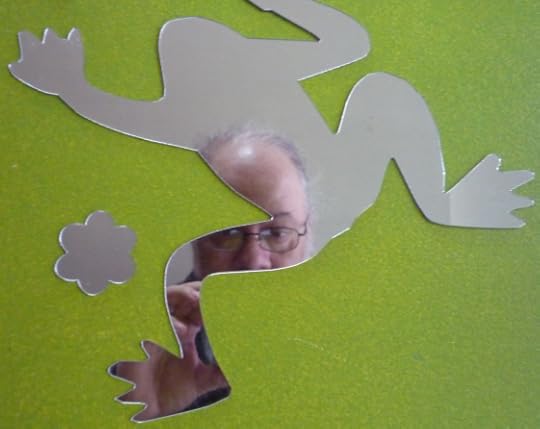
2013 has been a busy year for Ira Nayman. He self-published the fourth and fifth collections of Alternate Reality News Service articles, The Street Finds Its Own Uses for Mutant Technologies and The Alternate Reality News Service’s Guide to Love, Sex and Robots. His first novel, Welcome to the Multiverse (Sorry for the Inconvenience) was published by Elsewhen Press; the follow-up, You Can’t Kill the Multiverse (But You Can Mess With Its Head) is scheduled for publication in 2014. September marked the eleventh anniversary of his Web site of political and social satire,Les Pages aux Folles (updated weekly). You say you’ve never experienced Ira’s unique brand of humour, speculative fiction, social commentary and absurd surrealism? Well, on those long, lonely nights at his computer, he consoles himself with the knowledge that he’s never heard of you, either.
Thanks Ira! Up next on The Truth Inside the Lie: Nina Munteanu
Thanks for visiting the Warpworld Comm! Contact us for infrequent, non-spammy, and highly entertaining Warpworld news.
November 23, 2013
The Truth Inside the Lie – Joshua Simpson
Anyone who knows me in real life would not be shocked to learn the world I created for Warpworld was one rich in forests and water, populated by a class of independent mariners, featuring a female protagonist who rebels against the constraints of her gender and caste. As foreign as S’ora may seem to the uninitiated, to me it is the world I know and love, only set on a slightly different stage. It was simply fortunate happenstance that the world I knew contrasted so perfectly with the world and characters Josh had already created when we first sat down to commit fiction together.
I asked Josh to come out of his desert hideaway to talk about the real life people, places, and events that inspired his half of the Warpworld universe.
Take it away Josh…
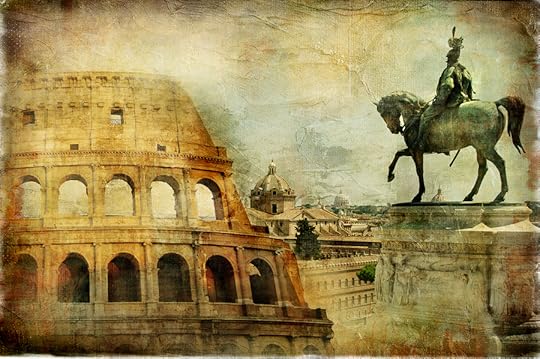 No matter how original a creation, it’s ultimately inspired by the knowledge base a person derives from their life experiences. In Warpworld, I drew on numerous historical and social parallels when I was creating the World and the People.
No matter how original a creation, it’s ultimately inspired by the knowledge base a person derives from their life experiences. In Warpworld, I drew on numerous historical and social parallels when I was creating the World and the People.
First I looked back at societies such as the Roman and Chinese empires. Both had huge surpluses of human labor, to the extent where the problem wasn’t having people available to work but what to do with all the people who were available. The situation on the World is similar—most natural resources are scarce or difficult to extract but the inhabitants aren’t going to run short on slave labor any time soon. The combination of those factors leads to a specific kind of dehumanization that differed from the institution of American chattel slavery, particularly in the nineteenth century. While the latter was no less abhorrent, American slaves had great value monetarily due to the inability to simply bring more in from Africa.

Another example of an influence would be current events. While we didn’t specifically aim for a wealth inequality storyline in Wasteland Renegades, the fact that a significant portion of the novel was written during the brief heyday of the Occupy movement meant certain elements of that real-life story crept into the narrative. Kris and I noticed this happening and kept those elements in because they grounded the story in an authentic conflict reflecting our own world.
In terms of real people inspiring fictional characters in Warpworld, I wrote a post about Alexander the Great, the historical figure I felt Seg resembled in the first book. (In the scope of his ambition and temperament, if not possessing Alexander’s near-supernatural competence. They probably run about even in luck, though.)
Those, of course, are the big and obvious parallels and inspirations, but there are numerous smaller ones. Every time I write about the politics of the Guild or the CWA—the way those organizations sabotage themselves or miss things outsiders might readily pick up—it’s a reflection of the institutions of which I’ve been a part. There are very few organizations where everyone is on the same page, and almost none of those organizations are of any size or venerable age. The larger and older an association becomes the more riven with traditionalist thinking, petty internal dramas, and the machinations of the ambitious. I’ve worked for some truly abysmal institutions in my time and have watched them choke the life from the most promising and well-meaning of programs. I’ve also watched people who do want to achieve actually work their way through the pitfalls of those institutions by political cunning and determination. The victories are usually short-lived, but with ossified organizations that’s generally the best one can hope for.
Likewise, while I don’t directly model characters on people I’ve known, there are traits and quirks that I readily borrow. In the third Warpworld book, which is currently in progress, there are a few scenes where Seg discusses matters of importance with his people while moving from task to task, rather than sitting in a conference room. This particular trait was taken from an individual I worked with—a hyper-energetic person who did his best work flying from task to task, handling the paperwork on any flat surface he could find or improvise during his brief moments of low activity. Working with that person was one of the great joys of my employed career, and during every scene I write with Seg thinking and planning in motion, demanding answers and formulating solutions on the fly, I think back to those days.
Thanks, Josh. You may return to your desert refuge once more! Next up: Ira Nayman Rituals
Thanks for visiting the Warpworld Comm! Contact us for infrequent, non-spammy, and highly entertaining Warpworld news.

